In this episode I will be discussing the enduring popularity of the yule log or bûche de noel (the edible version rather than the flammable one) with American baker and author of Sweet Paris, Frank Adrian Barron who you may know from Instagram as @cakeboyparis. We’ll also be talking about how this dessert has evolved and the secret to making a great bûche de noel.
To whet your appetite here is French pastry chef, Pierre Lacam’s recipe originally published in Le Mémorial Historique Et Géographique De La Pâtisserie (1890).
Bûche de Noel
Elle se fait en biscuit à la poche, et en génoise sur plaque. En biscuit, c’est plus coûteux pour la crème, vu les cintres des bouchées. La génoise est chère par sa pâte et ses rognures, mail n’a pas de cintres à boucher. Prenons la génoise, vous coupez une dizaine de ronds égaux, je suppose, vous les collez l’un contre l’autre à la crème moka ou chocolat. Vous masquez bien tou autour et lissez. Vous la couchez sur un front allongé parsemé d’amandes grillées. Vous a décorez d’un bout à l’autre à la fine douille à breton, bien égale, imitant l’écorce de l’arbre, et après, vous y posez quatre ou cinque noeuds en biscuit épais coupés à l’emporte-pièce imitants les noeuds de branches, vous les masquez et les décorez de bas en haut même douille, l’on masque les deux extrémités de la bûche sans décorer. Il y a des maisons qui passent avec pression de la pâte d’amandes vert à la passoire, d’autres sèment des pistaches hachées très fines. On en fait à la meringue italienne, mais ferme.
Here is the literal translation from Google to give you an idea (clearly it doesn’t do technical pastry terms!).
It is made in biscuit in the pocket, and in sponge cake on a plate. In biscuit, it is more expensive for the cream, given the hangers of the bites. Sponge cake is expensive in its dough and trimmings, but has no hangers to butcher. Let's take the sponge cake, you cut about ten equal circles, I suppose, you stick them against each other with mocha or chocolate cream. You mask well all around and smooth. You lay it on an elongated forehead sprinkled with toasted almonds. You decorate from one end to the other with a thin Breton nozzle, very even, imitating the bark of the tree, and then you put four or five knots in thick biscuit cut with a cookie cutter. imitating branch knots, you mask them and decorate them from bottom to top, same sleeve, we mask the two ends of the log without decorating. There are houses that strain green marzipan through a sieve, others sow very finely chopped pistachios. We make it with Italian meringue, but firm.
Pierre Lacam (1836-1902) was the son of a dyer born near Sarlat in the Dordogne, France. He decided to follow his older brother into the patisserie profession working his way up to eventually work for the Prince of Monaco, Charles III in 1877. He was interested in regional cakes and breads which led to the publication Le Mémorial Historique Et Géographique De La Pâtisserie in 1890. This was the first time a recipe for the bûche de noel appears although it was invented earlier.
In Le Glacier Classique et Artistique en France et en Italie par Pierre Lacam and Antoine Charabot (1893), Lacam wrote:
‘Today there are new desserts but we no longer know the name of the inventor. For example, we were never able to find out who had created the Yule Log…. after looking, I found that it was a man named Antoine Charabot, chef at Maison Sanson , 14, rue de Buci, who created the tree branch in 1879. It remained the same for a few years. Several patisseries began to make it and since 1886 its fashion has not diminished.’
Le Glacier Classique includes an ice cream version of this Christmas dessert.
Useful Links
You can find out more about Frank Adrian Barron’s cakes and workshops on his website or follow him on Instagram.
Sweet Paris by Frank Adrian Barron (2022)
This year Maxime Frédéric of Le Cheval Blanc in Paris has produced a bûche de noel shaped like an old fashioned steam train, ‘La Chocomotive’.
Sweet Invention: A History of Dessert by Michael Krondl (2010) - don’t forget to listen to episode 3 of this podcast where Michael and I discuss the history of the Sachertorte.
A full biography (in French) on Pierre Lacam can be viewed here.
‘Ceremonies for Christmas’ in Hesperides by Robert Herrick (1648)
Le Mémorial Historique Et Géographique De La Pâtisserie by Pierre Lacam (in French)
Le Glacier Classique et Artistique en France et en Italie par Pierre Lacam and Antoine Charabot (1893) (in French)
Fanny Cradock has a lot to say about Swiss Roll’s (including yule logs) and the best way to roll them. Take a look at Kevin Geddes’ blog post or this clip of Fanny’s TV Christmas favourites.

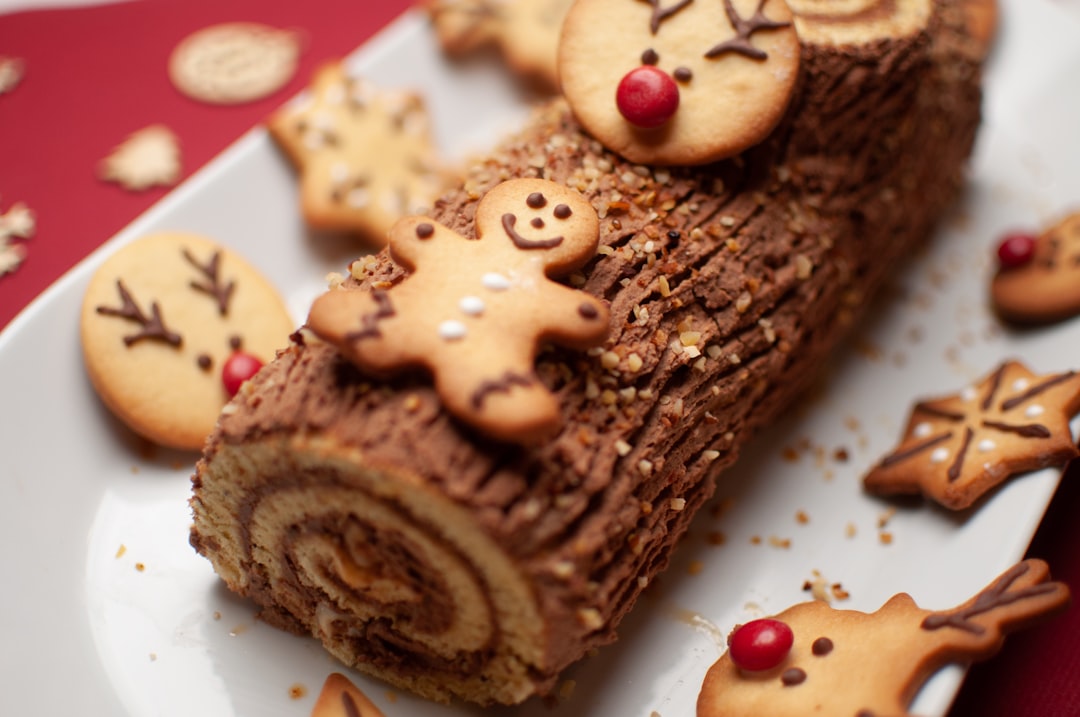



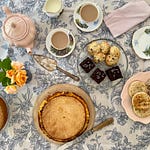
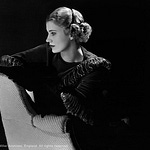

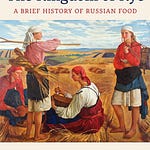
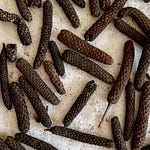



Share this post